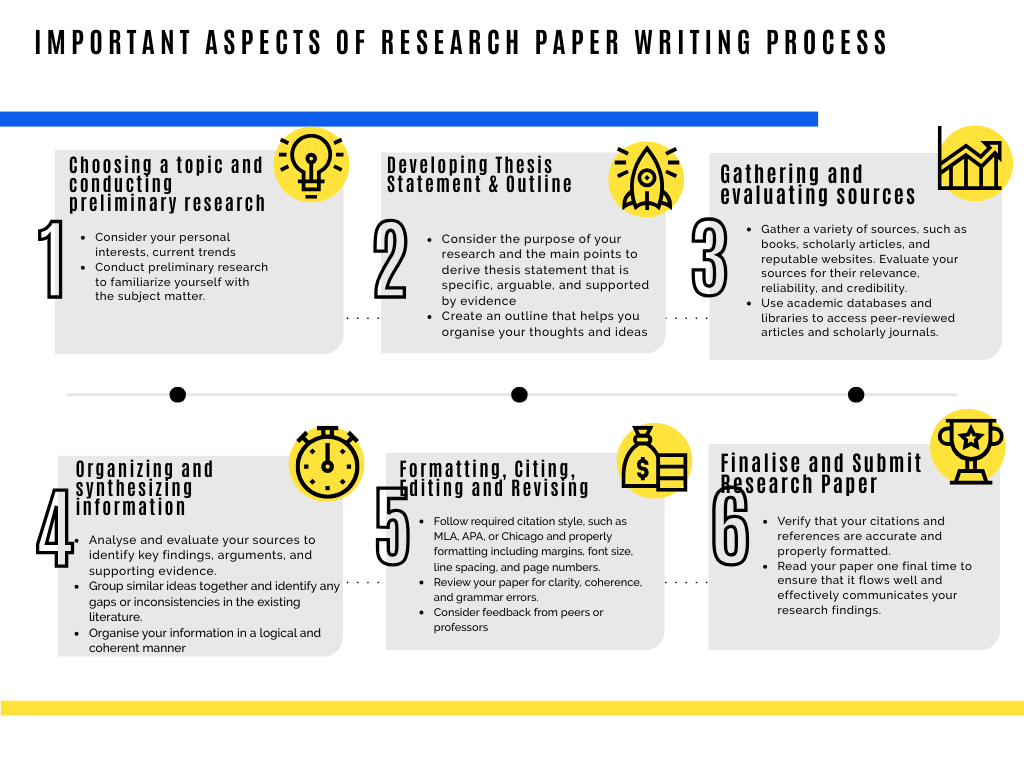In today's fast-paced digital age, writing a research paper that stands out from the rest is no easy feat. With countless academic articles flooding the internet, how can you ensure that your research paper grabs the attention it deserves? Look no further! This step-by-step guide will provide you with the essential tools and techniques to create a research paper that not only captivates your readers but also sets you apart from the competition.
Whether you're a novice researcher or a seasoned scholar, this comprehensive guide will walk you through each stage of the writing process. From selecting the perfect topic to conducting thorough research, organizing your ideas, and crafting a compelling thesis statement, we've got you covered. You'll also learn invaluable tips on how to write clear and concise paragraphs, incorporate credible sources, and utilize proper citation styles.
By following this guide, you will not only gain the confidence and skills necessary to produce a research paper that impresses your professors and peers but also one that ranks high on search engines and attracts significant reader engagement. So, let's dive in and start writing that standout research paper today!
Related: The Power of Research Papers: Fueling Your PhD Journey
Understanding the Research Paper Writing Process
Writing a research paper involves a systematic and structured approach. Understanding the research paper writing process is crucial to ensure that your paper is well-organized and coherent. The process typically includes several stages, starting from choosing a topic and conducting preliminary research to finalizing and submitting your paper.

1. Choosing a topic and conducting preliminary research
The first step in writing a research paper is selecting a topic that is both interesting and manageable. Consider your personal interests, current trends, and the requirements of your assignment. Once you have chosen a topic, conduct preliminary research to familiarize yourself with the subject matter. This will help you gain a general understanding of the topic and identify potential research gaps or areas of interest.
Related: Trending PhD research topics for 2024
2. Developing a strong thesis statement
A strong thesis statement is the backbone of any research paper. It serves as a clear and concise summary of the main argument or focus of your paper. To develop a strong thesis statement, consider the purpose of your research and the main points you want to convey. Your thesis statement should be specific, arguable, and supported by evidence.
3. Creating an outline for your research paper
An outline is a roadmap that helps you organize your thoughts and ideas before you start writing. It provides a structure for your paper and ensures that your arguments flow logically. A well-crafted outline should include an introduction, body paragraphs, and a conclusion. Break down your main points into subtopics and arrange them in a logical order.
4. Gathering and evaluating sources
Research papers require credible and reliable sources to support your arguments. Gather a variety of sources, such as books, scholarly articles, and reputable websites. Evaluate your sources for their relevance, reliability, and credibility. Use academic databases and libraries to access peer-reviewed articles and scholarly journals. Take thorough notes and keep track of your sources for proper citation later on.
5. Organizing and synthesizing information
Once you have gathered your sources, it's time to organize and synthesize the information. Analyze and evaluate your sources to identify key findings, arguments, and supporting evidence. Group similar ideas together and identify any gaps or inconsistencies in the existing literature. Organize your information in a logical and coherent manner that supports your thesis statement.
6. Formatting and citing your research paper
Proper formatting and citation are essential in academic writing. Follow the guidelines provided by your professor or the required citation style, such as MLA, APA, or Chicago. Ensure that your paper is properly formatted, including margins, font size, line spacing, and page numbers. Cite your sources accurately using in-text citations and create a comprehensive bibliography or reference list.
7. Editing and revising your research paper
Editing and revising are crucial steps in the research paper writing process. Review your paper for clarity, coherence, and grammar errors. Ensure that your arguments are well-supported and your ideas are presented logically. Pay attention to sentence structure, word choice, and overall readability. Consider seeking feedback from peers or professors to gain different perspectives and improve your paper further.
8. Finalizing and submitting your research paper
Before submitting your research paper, take the time to review and finalize it. Ensure that all formatting requirements are met, and there are no spelling or grammar errors. Verify that your citations and references are accurate and properly formatted. Read your paper one final time to ensure that it flows well and effectively communicates your research findings. Once you are satisfied with the final version, submit your research paper according to the given guidelines.
Related: Master Your Game of Research Paper Writing with These Tricks
By following this step-by-step guide, you will gain the confidence and skills necessary to produce a research paper that impresses your professors and peers. Remember to choose a compelling topic, develop a strong thesis statement, gather credible sources, organize your information effectively, and adhere to proper formatting and citation styles. With dedication and thoroughness, you can write a research paper that stands out from the rest and leaves a lasting impact on your readers. So, what are you waiting for? Start writing that standout research paper today!

